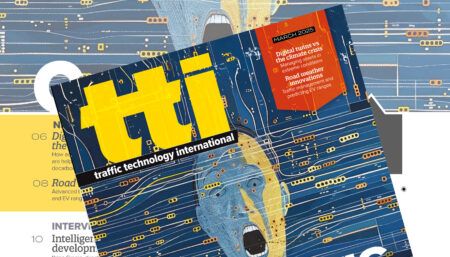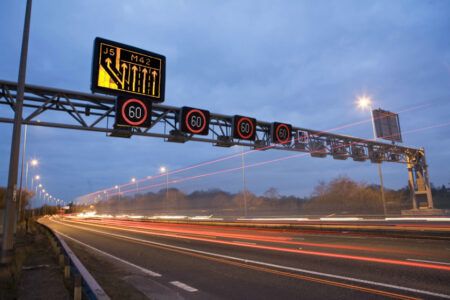The Arizona Department of Transportation (ADOT) has started work on a project to create a dust storm warning system on a section of Interstate 10 that is particularly prone to this hazardous road condition, when visibility can suddenly be severely reduced.
This month, ADOT engineers are beginning design work on the scheme along a 10 miles (16km) long stretch of I-10 between Tucson and Phoenix, where dust storms often develop suddenly. The concept is that when dust, whipped up by gusting wind, is creating dangerous driving conditions, sensors placed along the highway set off an alert. Immediately, overhead electronic message boards warn drivers about the threat ahead. Programmable signs next to the highway show a speed limit reduced from 75mph (120km/h) to as slow as 35mph (56km/h). Closed-circuit TV cameras will allow staff at ADOT’s Traffic Operations Center (TOC) in Phoenix to see the real-time conditions on the roadway, while in-pavement sensors report the speed and flow of traffic.
Installation of the state-of-the-art dust-detection system is expected to begin by late next summer between milepost 209 near Eloy and milepost 219 near Picacho Peak, and the system could be in operation by fall 2018 or early 2019. Along with the threat from monsoon storms in the summer and autumn, soil conditions in this area are such that strong wind any time of year can suddenly produce localized dust that severely reduces visibility, a phenomenon known as a ‘dust channel’. Sensors placed near the freeway will be able to detect dust as far as a mile or more away. That will give ADOT crews a chance to monitor conditions and alert the public about potentially hazardous situations.
Once the system is in use and evaluated, similar warning systems could be used in other dust-prone areas, including I-10 in both western and southeastern Arizona, and I-40. ADOT’s plan calls for overhead message boards 5 miles (8km) apart in each direction between mileposts 209 and 219. Variable speed limit signs are to be placed every 1,000 feet (300m) for the first mile in each direction and then every two miles, allowing ADOT staff to lower the speed of traffic when dust is present. Closed-circuit cameras placed on poles will allow ADOT staff to confirm the latest conditions and traffic flow. A key part of designing the system will be evaluating and selecting dust sensors. ADOT’s emphasis will be on accuracy, reliability and durability.
“In addition to providing earlier warnings about blowing dust in an especially troublesome area, this innovative system will advance our understanding of whether similar systems can be effective in other locations around Arizona,” said Brent Cain, director of ADOT’s transportation systems management and operations division.
With a goal of making travel on I-10 safer and more efficient, ADOT director, John Halikowski and leaders of transportation departments in California, New Mexico and Texas recently created the I-10 Corridor Coalition. Halikowski said, “Adding this detection-and-warning system will help achieve the coalition’s goals, not only by saving lives, but by reducing delays caused by dust-related crashes.”




